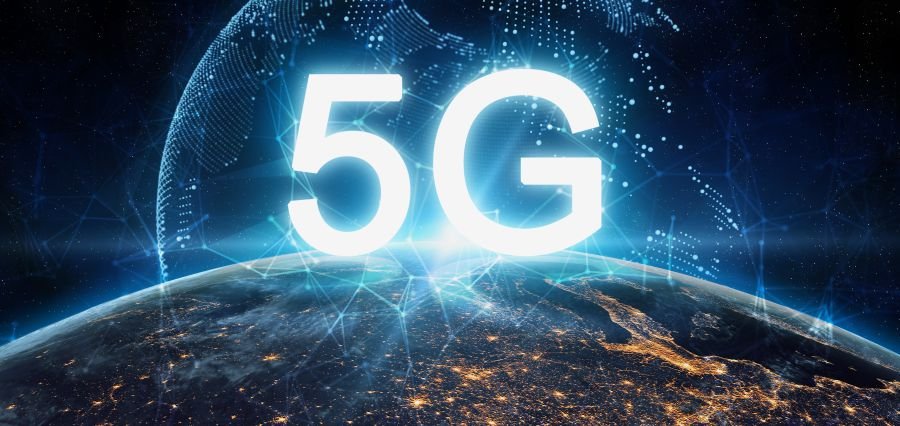The advent of 5G technology represents a monumental leap in the evolution of telecommunications, promising to transform the way we connect, communicate, and interact with the world. As the fifth generation of mobile networks, 5G is set to revolutionize not only our personal devices but also a wide array of industries. This blog explores how 5G technology is reshaping connectivity and its far-reaching impacts on various sectors, from everyday communication to advanced technological applications.
The Basics of 5G Technology
5G, or fifth-generation wireless technology, is designed to deliver significantly faster speeds, lower latency, and greater capacity compared to its predecessors. Here’s a brief overview of its core features:
Speed and Bandwidth: 5G networks offer speeds up to 100 times faster than 4G LTE. This enables ultra-fast data transfer, allowing users to download and upload content almost instantaneously. Enhanced bandwidth also means that 5G can handle more devices simultaneously without a drop in performance.
Low Latency: Latency refers to the time it takes for data to travel from one point to another. 5G reduces latency to as low as one millisecond, compared to 30-50 milliseconds in 4G. This near-instantaneous response time is crucial for applications that require real-time feedback, such as autonomous vehicles and remote surgeries.
Network Slicing: 5G introduces the concept of network slicing, where the network is divided into virtual slices that can be tailored to meet the specific needs of different applications or industries. This flexibility allows for optimized performance and efficient use of network resources.
Transforming Personal Connectivity
5G technology is set to enhance our personal connectivity in several significant ways:
Enhanced Mobile Experience: With 5G, streaming high-definition videos, playing online games, and using augmented reality (AR) applications will become smoother and more immersive. The increased speed and reduced buffering will provide a superior experience for consumers.
Smart Devices and IoT: 5G will accelerate the growth of the Internet of Things (IoT) by supporting a vast number of connected devices. Smart homes, wearables, and other IoT devices will benefit from improved connectivity, enabling seamless communication and more sophisticated functionalities.
Improved Connectivity in Remote Areas: 5G has the potential to bridge the digital divide by providing high-speed internet access to underserved and remote areas. This can enhance education, healthcare, and economic opportunities in regions that previously had limited connectivity.
Revolutionizing Industry Applications
The impact of 5G extends well beyond personal connectivity, with profound implications for various industries:
Healthcare
Telemedicine: 5G will revolutionize telemedicine by enabling high-definition video consultations, real-time remote monitoring, and advanced diagnostic tools. Surgeons can perform remote surgeries with minimal delay, and healthcare providers can monitor patients’ health in real-time using connected devices.
Medical Robotics: The low latency of 5G is crucial for operating medical robots and performing complex procedures remotely. Surgeons can control robotic instruments with high precision and receive real-time feedback, improving the quality of care and expanding access to specialized medical services.
Transportation
Autonomous Vehicles: Self-driving cars rely on real-time data to navigate and make split-second decisions. 5 G’s low latency and high-speed connectivity are essential for the effective operation of autonomous vehicles, allowing them to communicate with each other and with infrastructure seamlessly.
Smart Traffic Management: 5G can enhance traffic management systems by enabling real-time monitoring and coordination of traffic signals, reducing congestion, and improving overall road safety. Intelligent transportation systems can optimize traffic flow and provide timely information to drivers.
Manufacturing and Industry 4.0
Smart Factories: In the era of Industry 4.0, 5G facilitates the deployment of smart factories where machines, sensors, and robotics communicate and operate in real time. This connectivity enhances automation, efficiency, and productivity, driving advancements in manufacturing processes.
Remote Monitoring and Control: 5G enables remote monitoring and control of industrial equipment, allowing for predictive maintenance and reducing downtime. This capability is especially valuable in hazardous or hard-to-reach environments, where remote operation can improve safety and operational efficiency.
Entertainment and Media
Augmented and Virtual Reality: 5 G’s high speed and low latency are critical for delivering immersive AR and virtual reality (VR) experiences. Whether it’s for gaming, virtual events, or interactive media, 5G will enhance the quality and responsiveness of AR and VR applications.
Live Broadcasting: Media companies can leverage 5G to stream live events in ultra-high definition with minimal delay. This improved streaming quality will enhance the viewer experience for sports, concerts, and other live broadcasts.
The Role of 5G in Smart Cities
5G technology is a cornerstone of the smart city concept, where urban environments leverage technology to improve quality of life and operational efficiency:
Smart Infrastructure: 5G enables the development of smart infrastructure, including intelligent street lighting, waste management systems, and energy grids. These systems can optimize resource use, reduce operational costs, and enhance the overall livability of cities.
Public Safety: 5 G’s connectivity supports advanced public safety applications, such as real-time surveillance, emergency response systems, and disaster management. High-speed data transmission allows for quicker response times and more effective management of public safety incidents.
Environmental Monitoring: Smart cities can use 5G to deploy sensors that monitor environmental conditions, such as air quality, noise levels, and traffic patterns. This data helps cities address environmental challenges and improve the well-being of their residents.
Challenges and Considerations
While 5G technology offers transformative potential, it also comes with challenges that need to be addressed:
Infrastructure and Deployment: Rolling out 5G requires significant investment in infrastructure, including new base stations and upgraded networks. This process can be costly and time-consuming, and there may be challenges related to obtaining permits and managing construction.
Security and Privacy: With increased connectivity comes heightened concerns about security and privacy. 5G networks must implement robust security measures to protect against cyber threats and safeguard users’ personal data.
Health Concerns: There are ongoing debates about the potential health effects of increased exposure to radiofrequency radiation from 5G networks. Ensuring that 5G technology adheres to safety standards and addressing public concerns transparently is essential.
Conclusion
5G technology is poised to revolutionize connectivity and drive innovation across a multitude of sectors. Its high-speed data transfer, low latency, and capacity for supporting a vast number of connected devices will transform personal experiences, enhance industrial processes, and enable the development of smart cities.
As 5G continues to roll out globally, its impact will become increasingly evident, creating new opportunities and challenges. Embracing 5 G’s potential while addressing its associated challenges will be crucial for unlocking its full benefits and ensuring that it contributes positively to our connected future.
For more articles: https://ciolookasia.com/








